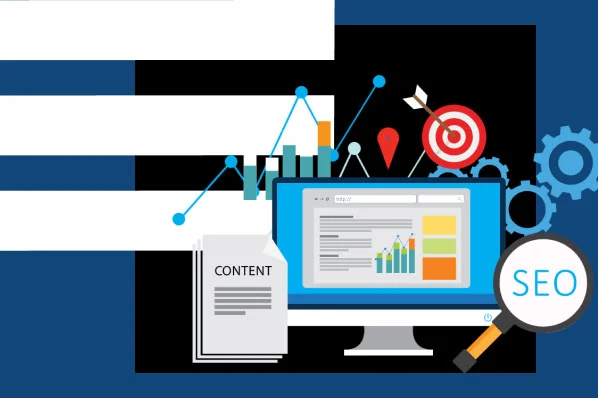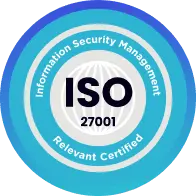The landscape of paid social media advertising has seen a consistent upward trajectory since the dawn of 2019. As we stand today, businesses are gearing up to allocate nearly a fifth of their advertising budgets to this realm of pay-to-play promotion. It’s abundantly clear that social media advertising has become an integral component of marketing strategies for businesses of all sizes.

All about paid social media:
- But what exactly is paid social media?
- Paid Social Media Strategy
- Paid Social Media Strategy Objective
- Paid Social Media Strategy Budget
- How to Effectively Utilize Paid Social Media Advertising on Various Platforms
In essence, paid social media delivers the same benefits as its organic counterpart by facilitating precise audience targeting and driving sales. The inherent advantage of investing in this type of advertising lies in its ability to provide rapid market entry, sustained campaign viability, and the age-old effectiveness of message frequency.
Building organic social media traction can be a gradual process, influenced by the intricate algorithms governing popular social platforms. For those running time-sensitive campaigns, this ramp-up period can potentially result in missed visibility and leads. In contrast, paid social media kickstarts your campaign with an instantaneous boost that organic posts simply can’t match.
1.But what exactly is paid social media?
Paid social media encompasses the strategic deployment of advertisements or sponsored promotional content on prominent social media platforms, meticulously aimed at specific sub-audiences. It spans various forms, including pay-per-click advertising, branded or influencer-generated content, and display ads. Identification is fairly straightforward; you’ll often spot a paid social media ad thanks to the “sponsored” or “promoted” tag adorning the post.
Each social media platform boasts its unique characteristics. Twitter excels in short-form content, Instagram is predominantly visual, Facebook offers a dedicated marketplace for avid shoppers, and LinkedIn serves as a hub for networking professionals. Consequently, paid social media strategies must adapt to the nuances of each platform, bearing in mind the campaign objectives and target audience.
So, let’s delve into some concise strategies that can help you harness the power of paid social media to bolster your brand’s presence.
2.Paid Social Media Strategy
A paid social media strategy leverages external marketing activities on various social media channels, lending support to pay-per-click advertising. It entails utilizing the native advertising tools provided by these platforms to design, schedule, and disseminate targeted ads to reach a specific market segment. The objectives of a paid social media strategy can encompass awareness, consideration, or conversions.
A well-crafted paid social media strategy can be a game-changer for businesses operating with limited budgets aiming for substantial ROI. If your resources are constrained but you’re striving to meet ambitious marketing goals, look no further. We’ve compiled essential insights to guide your journey into the realm of paid social media advertising.
To kickstart your paid social media strategy, two critical components come into play: your objective and your budget.
3.Paid Social Media Strategy Objective
 Establishing a clear objective for your paid social media strategy provides a roadmap for your subsequent tactics and a tangible goal to pursue. Picture this strategy as a road trip: you commence your journey at your home with a specific destination and timeframe in mind. Paid social media ads work similarly. Your audience initiates their journey with your brand as they encounter your content on their newsfeed, and your goal is to lead them to that desired destination – whether it’s a content offer on your website, an email subscription form, or even your social media profile itself.
Establishing a clear objective for your paid social media strategy provides a roadmap for your subsequent tactics and a tangible goal to pursue. Picture this strategy as a road trip: you commence your journey at your home with a specific destination and timeframe in mind. Paid social media ads work similarly. Your audience initiates their journey with your brand as they encounter your content on their newsfeed, and your goal is to lead them to that desired destination – whether it’s a content offer on your website, an email subscription form, or even your social media profile itself.
To pinpoint where your audience is embarking on this journey, you’ll employ filters, settings, and criteria to narrow down your target audience, ensuring they start from a similar point. This starting point need not be a physical location; it can be defined by factors like age, interests, or occupation.
Once you’ve established the starting point, the next step is defining your destination. Different social media ad platforms offer their unique conversion tools, but the ultimate goal remains consistent – prompt individuals to share their contact information with your business. This can be achieved through a form fill or by directing them to a dedicated landing page on your website. Both methods are effective in reaching the desired destination, but your choice should align with your business’s specific needs.
4.Paid Social Media Strategy Budget
Paid social media advertising stands out as one of the most cost-effective advertising methods, whether in the traditional or digital realm. The pay-to-play model allows for flexible targeting, enabling you to reach only those individuals your business intends to attract, thereby ensuring that you only pay for potential reach.
 In contrast to traditional advertising, where costs hinge on factors like spot duration and airtime, social media ads are priced based on the campaign’s duration and the anticipated number of impressions. This offers a more favorable Key Performance Indicator (KPI) to track – cost per acquisition – compared to traditional ads, which can only vaguely gauge cost per million impressions.
In contrast to traditional advertising, where costs hinge on factors like spot duration and airtime, social media ads are priced based on the campaign’s duration and the anticipated number of impressions. This offers a more favorable Key Performance Indicator (KPI) to track – cost per acquisition – compared to traditional ads, which can only vaguely gauge cost per million impressions.
The cost of paid social media ads can commence as low as $1, thanks to the bidding model and lottery system some platforms employ to introduce ads into users’ newsfeeds. The spending possibilities are virtually limitless, but you have the option to set a budget limit that prevents the campaign from exceeding your allocated funds.
However, it’s crucial to monitor your credit card balance closely, especially as you approach your spending limit. These campaigns are designed to halt once the allocated funds are exhausted. While this feature might seem helpful, it can become an inconvenience at best and a hindrance to your campaign at worst. In the case of a substantial campaign requiring a budget surpassing your credit card’s limit, even a brief hiatus to pay down the balance can result in lost leads and campaign momentum. If your credit card necessitates daily full payment due to a high spending limit you’ve set, someone on your team will need to diligently handle numerous expense reports throughout the campaign’s duration.
To mitigate this challenge, consider increasing your business credit card’s balance to provide more time for payment before the ads deplete it, or set a lower daily spending cap for your campaign.
5.How to Effectively Utilize Paid Social Media Advertising on Various Platforms
Paid advertising on social media platforms wields significant potential for reaching your target audience, amplifying brand awareness, and generating leads and sales. However, harnessing its power efficiently requires a strategic approach. In this article, we’ll delve into the crucial elements of social media advertising, including platform selection, goal setting, budget allocation, ad creation, and performance measurement.

- Select the Right Platform
Not all social media platforms are created equal, and their advertising options vary accordingly. Depending on your business objectives, target demographic, and industry, you should focus on one or more platforms that align with your goals. For instance, if you aim to engage a youthful and creative audience, platforms like Instagram or TikTok might be your best bet. On the other hand, if your target audience comprises professionals and B2B customers, platforms such as LinkedIn or Twitter could be more suitable. Prioritize research on each platform’s demographics, features, and advertising costs to make an informed decision regarding your ad budget allocation.
- Define Your Goals and Budget
Before launching any social media ad campaign, you must have a well-defined set of objectives and a clear budget in mind. What are you looking to achieve – an increase in followers, website traffic, lead generation, or enhanced sales? How will you measure success and return on investment? What daily, weekly, or monthly budget can you comfortably allocate to your advertising efforts? Establishing SMART (Specific, Measurable, Achievable, Relevant, Time-bound) goals and a realistic budget will serve as the foundation for planning and optimizing your advertising strategy.
- Craft Compelling Ads
Once you’ve determined the platform, set your objectives, and allocated your budget, the next crucial step is creating ads that captivate your target audience and motivate them to take action. Depending on the chosen platform, you’ll have access to various formats and features, such as images, videos, carousels, stories, or live streams. It’s imperative that your ads are not only relevant but also informative and appealing to your intended audience. Employ high-quality visuals, attention-grabbing headlines, clear calls to action, and value propositions that highlight your unique selling points.
- Measure Your Results
One of the key advantages of social media advertising is the ability to monitor and analyze performance in real-time, enabling you to make adjustments as necessary. Most platforms offer tools and metrics to track parameters such as reach, impressions, clicks, conversions, and cost per result. You can also utilize third-party tools or analytics platforms for deeper insights and data. By consistently monitoring your results, you can discern effective strategies from less successful ones and fine-tune your ads accordingly.
- Experiment and Test
Lastly, don’t shy away from experimentation and testing when it comes to your social media advertising endeavors. Implement A/B testing or split testing to compare the performance of different ad versions and identify which one yields superior results. You can also experiment with diverse platforms, target audiences, objectives, budgets, formats, and messaging to discover the optimal combination for your business. Embracing a culture of testing and experimentation will not only help you learn from your experiences but also enhance your skills and uncover new opportunities for growth.
We have compiled for you a free review of the most popular paid social media platforms. Do you want to get acquainted? Click on the link!
Diverse Avenues for Paid Social Media Success
Every paid social media platform possesses its distinct charm and allure, setting it apart from the competition. However, when seeking a paid ad platform that converts, keep an eye on three essential elements: the capacity for captivating visual content, seamless access to lead generation forms, and ample space for compelling ad copy.
Popular social media:
1.Facebook
In the realm of Facebook advertising, the name of the game is Facebook Targeted Ads. This platform stands head and shoulders above the rest, and for good reason. It operates on a bidding system, a unique buying process where advertisers compete to showcase their ads to their preferred target audience. The winning bid earns the spotlight, granting access to a highly specific demographic based on factors like location, interests, demographics, and more. While this granular approach may not suit larger corporations, it can be a game-changer for small businesses, transforming sluggish sales into sold-out days.
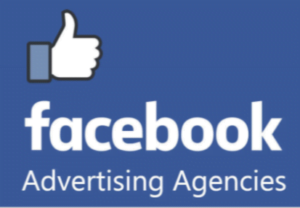 Beyond the bidding lottery, Facebook Ads enables you to tailor your ads based on user behavior, allowing you to engage your existing Facebook audience effectively.
Beyond the bidding lottery, Facebook Ads enables you to tailor your ads based on user behavior, allowing you to engage your existing Facebook audience effectively.
Employing Facebook Ads not only helps in building new leads but also boosts brand awareness. Facebook’s comprehensive reporting and analytics tools are perfect for experimenting with variables like post timing and content formats, allowing you to fine-tune your campaigns for maximum audience engagement.
Network for Good has been executing a robust paid social media strategy for several years. As someone involved in multiple nonprofit organizations, I frequently encounter their Facebook ads, featuring checklists, templates, and guides. Here’s why their approach works:
- In-Platform Experience: Network for Good keeps users within the Facebook ecosystem. When a user clicks to download a checklist, they don’t get redirected to an external website. Facebook offers the option for in-app form submissions, ensuring a seamless user experience. Users can complete their interaction with the ad and continue their Facebook session effortlessly.
- Clear Call to Action: The ad leaves no room for ambiguity; it directs users to download the Peer-to-Peer Fundraising Checklist. Clear, concise copy like this simplifies the user’s conversion process, eliminating any uncertainty about the next step. They can either scroll further or download the checklist.
For additional insights on running Facebook Ads that convert, similar to this example, explore this checklist, which offers lesser-known tips for successful ad campaigns on the platform.
2.Twitter
Twitter’s paid ads tend to sneak into the user experience, blending seamlessly with organic tweets. As a consumer, you might barely notice you’re looking at a sponsored tweet, and as a marketer, this subtlety works in your favor, ensuring more eyes on your ads compared to other, more overt platforms.

Why choose Twitter Ads? Well, Twitter boasts 192 million monetizable daily users, and its ad software lets you precisely target specific demographics.
As a native of Tennessee, I can appreciate The Penny Hoarder’s approach of using geographically targeted ads. Such ads can be a boon for businesses in broad market categories like finance. Financial advice is relevant to people everywhere, but by framing the content in a regional context, this ad intrigued me, prompting a click to learn more. Here’s why this ad is effective:
- Increased Traffic: The continuous advertising on Twitter consistently draws more views to the blog article. Unlike Facebook, which keeps users on the platform for longer, Twitter allows users to visit The Penny Hoarder’s website and read the article with a single click.
- Visual Appeal: Geography is just one method of evoking emotions and resonating with consumers in an ad. By incorporating an identifier like “Tennessee,” people from the area are likely to feel a personal connection, thinking, “This pertains to me and my community; I need to know more.”
Twitter offers various ad settings based on your budget, including frequency, placement, and ad format. When you’re ready to launch your social ads on this platform, Twitter provides a range of formats to choose from, tailored to your objectives.
3.Instagram
With 84% of users discovering new products on Instagram, it’s no wonder that advertising on this platform has seen significant growth in recent years, from 64% to its current figure. With an audience of 1.16 billion accounts, Instagram’s advertising reach is an opportunity worth exploring.
To run ads on Instagram, you’ll need a business profile, allowing you to set up an ecommerce store directly within the app—a valuable feature, especially if you lack a dedicated website for payments or are venturing into ecommerce for the first time.
Since Facebook owns Instagram, running ads on both platforms is seamless and can be managed through Facebook.
With Instagram Ads, you can tailor your ad spend to suit your budget, starting from as low as $1. The duration of your campaign and the size of your audience are linked to this amount.
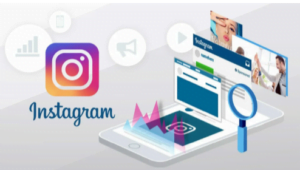 I like to compare Instagram ads to filling up a gas tank—you receive the amount of exposure equivalent to what you pay for. Your ad campaign runs for the duration you specify, offering control and flexibility.
I like to compare Instagram ads to filling up a gas tank—you receive the amount of exposure equivalent to what you pay for. Your ad campaign runs for the duration you specify, offering control and flexibility.
Aveeno’s use of Instagram’s ad platform to showcase their product is a case in point. The simple, visually appealing design draws attention to the product, and the clear call to action is effective. Instagram’s unique feature, allowing users to swipe up to learn more or make a purchase, streamlines the process. When finished, users can effortlessly return to their Instagram content consumption.
4.LinkedIn
LinkedIn is the professional network, where millions of individuals forge vital connections, find their dream jobs, or accomplish both. The platform empowers marketers to reach the same individuals on behalf of their businesses.
With 710 million professionals on LinkedIn, and four out of five of them influencing business purchase decisions, it’s a B2B advertiser’s dream platform. The potential to reach 40 million decision-makers on the most prominent social platform for lead generation makes LinkedIn an optimal choice for B2B advertising.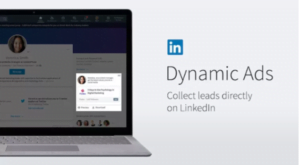
LinkedIn’s targeted ads permit keyword inputs and audience selection by category. Whether you’re posting a job listing or seeking candidates for a specific role, LinkedIn’s tools can help you discover a diverse pool of qualified candidates.
On24 adopts a concise yet engaging approach to start a dialogue with its target audience. By focusing on business use cases for its product, On24 positions itself as a thought leader on the topic of buyer journeys, enticing LinkedIn users to register for the event. Here’s why this approach works:
- In-Platform Convenience: Similar to Facebook, LinkedIn employs in-app form submissions, ensuring that interactions between businesses and LinkedIn users remain within the platform. After completing the registration, users can seamlessly continue their pursuit of opportunities, networking, or engaging with other content creators.
- Prompt for Engagement: Regardless of your ad spend, genuine engagement—comments, likes, and shares—must occur organically. This means that the captions, copy, and headlines you choose for your ads play a pivotal role. On24 does an excellent job by posing a question in the caption, something everyone can respond to, encouraging interaction.
LinkedIn offers various ad formats for experimentation to discover which one suits your goals best. To delve deeper into the available ad types on LinkedIn, such as sponsored, message, text, and dynamic ads, refer to our comprehensive guide on creating a compelling LinkedIn ad campaign.
Scaling Your Paid Social Media Strategy
 When you invest in a campaign, regardless of the budget’s size, you aim for a sustainable return on investment (ROI) that justifies the resources and effort expended. A growing ROI paves the way for future campaign scalability, and paid ads can be the fuel for your success.
When you invest in a campaign, regardless of the budget’s size, you aim for a sustainable return on investment (ROI) that justifies the resources and effort expended. A growing ROI paves the way for future campaign scalability, and paid ads can be the fuel for your success.
Now that you’ve gained a comprehensive understanding of the leading paid social media ad platforms, it’s crucial to monitor your hard work to realize that ROI. While native platforms provide reporting and analytics tools, things can get chaotic quickly when running campaigns across multiple social media sites.
The verdict is clear: social media channels are democratizing advertising, making it accessible to businesses of all sizes. Once you master the art of planning, creating, and targeting your ads to your desired audience, demonstrating the ROI of your ad campaigns to stakeholders becomes a smoother endeavor.
Author
-

Harry is an associate in strategy and operations at AdClickAgency. His experience also includes team management in acquisition marketing at AdClickAgency and event operations for the Boston Red Sox. Harry is experienced in commercial operations, marketing, and growth and holds an MBA from The Tuck School of Business at Dartmouth. He is also one of the founding members of the AdClickAgency Blog, and he loves creating educational content for marketers – check out AdClickAgency Academy's video course on SEO that he produced alongside SEO expert Matthew Howells-Barby.
View all posts



